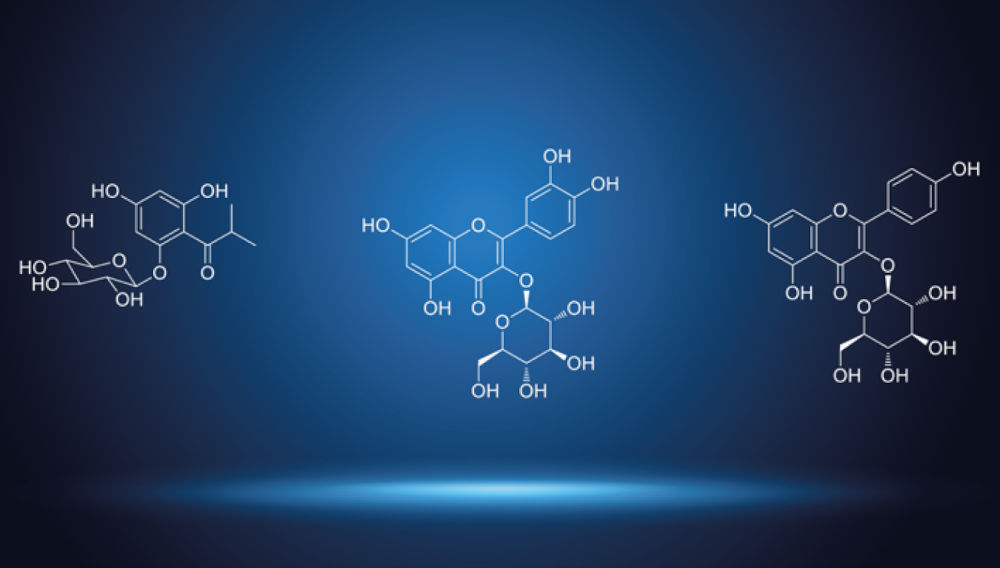Glycosidically bound hop polyphenols of the native hard resin fraction and their occurence in hops, hop products, and beer
Research and development | The beer bittering potential of hops apart from iso-alpha-acids can be assigned to phenolic compounds of the native hard resin fraction. Based on taste re-engineering experiments, Dresel et al. demonstrated that the additive contribution of iso-alpha-acids and various isolated hard resin components is necessary for constructing the authentic bitter percept of beer [1].
This comprises a range of various prenylflavonoids (with the main compound xanthohumol), some phenolic acid esters (e.g.: trans-p-coumaric acid ethyl ester) as well as a few glycosidically bound polyphenols. The latter include glycosides of the two well-known flavonols quercetin and kaempferol widespread in the plant kingdom. On the other hand, the so-called multifidol glucosides are more typical to hops as intermediates in the biosynthesis of alpha- and beta-acids.
In a study just published, the contents of such glycosidically bound polyphenols were determined in a worldwide spectrum of 34 different hop varieties by liquid chromatography in combination with tandem mass spectrometry [2]. In total more than 500 samples from two crops (2019, 2020) have been analyzed. The detected concentrations (mg/100 g) were dependent on variety with ranges in between of 6-155 for co-multifidol glucoside, 3-60 for ad-multifidol glucoside, 13-87 for quercetin-3-O-glucoside, 5-46 for quercetin- 3-O-rutinoside and 4-35 for kaempferol-3-O-glucoside. The average concentrations of these two multifidol glucosides and three flavonol glycosides seem to be varietal features but with wide ranges within one variety. Moreover, their fate during large scale hop processing has been investigated. Like all other hard resin components such glycosides are fully transferred to hop pellets. It could be confirmed that the glycosidically bound polyphenols are not extracted with supercritical carbon dioxide but with ethanol. Because only this type of extract contains single components of both the soft and hard resin fraction, it has been renamed from “ethanol extract” to “total resin extract” [3].
Because of their high polarity, glycosidically bound hop polyphenols are also extracted in the brewing process both during wort boiling [1] and via dry hopping [4]. In the end, they are also well soluble in the final beer.
References
[1] Dresel, M. et al.: Sensomics analysis of key bitter compounds in the hard resin of hops (Humulus lupulus L.) and their contribution to the bitter profile of Pilsner-type beer. J. Agric. Food Chem., 2015, 63, pp. 3402-3418. DOI: 10.1021/acs.jafc.5b00239
[2] Biendl, M. et al.: Monitoring of glycosidically bound polyphenols in hops and hop products using LC-MS/MS technique. J. ASBC, 2022. DOI: 10.1080/03610470.2021.2024112
[3] Biendl, M., and Cocuzza, S.: Hard resins – new findings about a familiar hop fraction. Hopfenrundschau International 2016/2017, pp. 59-68.
[4] Schmidt, C., and Biendl, M.: LC-MS/MS analysis of hop flavonoids in dry-hopped beers. BrewingScience, 2017, 70, pp. 197-202. DOI: 10.23763/BrSc17-20schmidt


